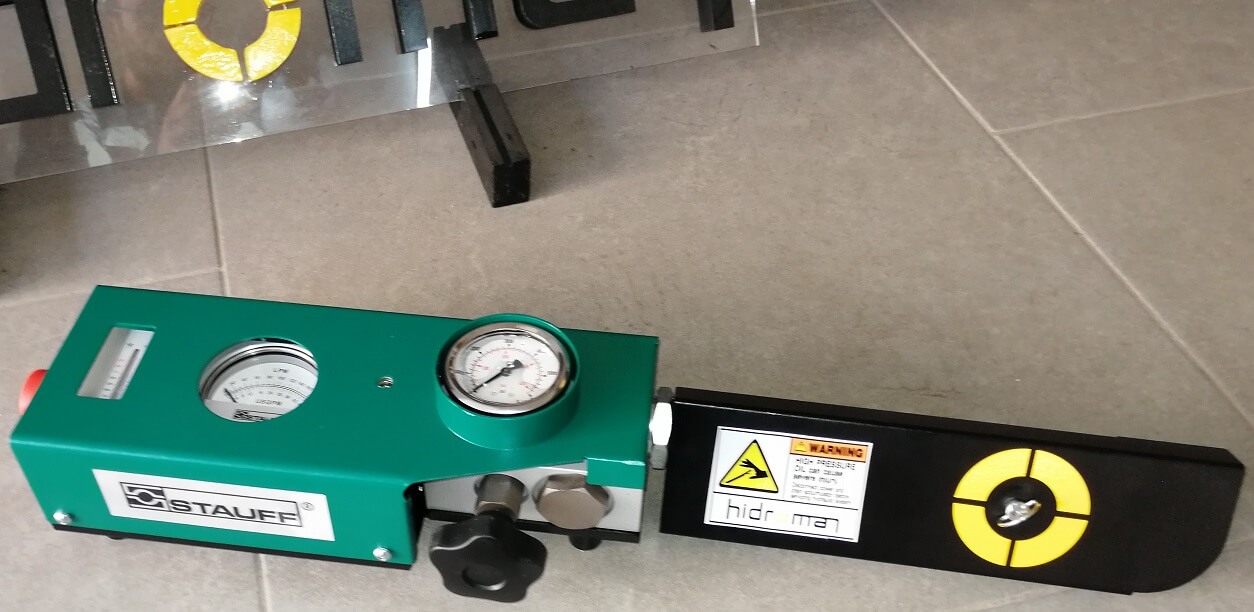


How is Hydraulic System Fault Detection Made?
Detecting hydraulic system malfunctions can be complicated, but by following certain steps you can be successful. Here is a general troubleshooting process:
Identifying the Problem:
Determine which components of the system have problems. This includes examining symptoms such as oil leaks, performance degradation, noise, vibration, etc.
Determine when and how the problem occurs. Did it occur under certain conditions, under a certain load, or over a certain period of time?
Visual Review:
Check the system for any obvious damage or leaks that are visible from the outside.
Visually inspect components such as hydraulic hoses, pipes, fittings, valves and cylinders.
Pressure Tests:
Check pressure levels in the system by performing pressure tests. This includes hydraulic pump outlet pressure, system pressure and pressures in the hydraulic cylinders.
Check for possible pressure drops or abnormalities during pressure tests.
Oil Analysis:
Take a sample of the hydraulic oil and have it analyzed in a laboratory. This analysis can help you determine the oil's impurity level, water content, acidity level and other important parameters.
Oil analysis can help identify potential problems in the system, especially if the oil has a high water content or increased contamination levels.
Component Review:
Disassemble if necessary to look inside the hydraulic pump, valves, cylinders, and other components.
Look for signs of wear, corrosion or damage inside the removed components.
Electrical and Control Systems:
Check that electrically operated control systems and sensors in hydraulic systems are working properly.
Check for possible malfunctions in electric valves, sensors or control panels.
Documentation:
Document all inspection and test results. This can be useful for future reference and prevent repeated failure situations.
Hydraulic system fault detection is a process that generally requires experience. Therefore, it is important that it be done under the direction of a technician or engineer with appropriate training and experience.
Hydraulic Systems As they are closed circuit systems, Maintenance Engineers and Maintenance Technicians are having a hard time detecting hydraulic system failures. For this reason, as Hidroman, our mobile flow testers with compact structure that allow you to easily detect the failures of your hydraulic system become very tin.
Searching for faults in hydraulic systems can be complicated. It requires knowledge and dexterity. Incorrect fault detection can result in extended time and unnecessary repairs and replacement. Proper equipment selection and logical approach are essential to avoid costly errors. Searching for faults should begin with the control and elimination of easy operations.
Finding hydraulic system failure takes a lot of time in modern complex hydraulic systems. This process can be done easily with Hidroman Flowmeter. After the hydroman flow test devices are easily adapted to the hydraulic system, defective product can be detected by performing flow, pressure and temperature control without removing any equipment from the hydraulic system.
Hidroman Flow Testers are resistant up to 400 bar pressure. With the preload feature, you can reach the required pressures and loads as if your hydraulic system is operating at full performance by simulating various working conditions.
Hydro system flow tester can be connected to Quick Coupling (quick coupling) and hydraulic system fault detection can be done quickly. Hydromanic Flow Test Devices and hydraulic system equipment such as Hydraulic Cylinder, Hydraulic Pump, Hydraulic Motor, Hydraulic Valve are controlled by a quick method by controlling the failure of the hydraulic system equipment, adjusting the flow and pressure settings required by the hydraulic system.

Hydraulic systems do not fail at once. If the problem, which usually manifests itself long ago, cannot be solved by the recommended stages, it is absolutely necessary to consult a specialist. By using the right tool, the hydraulic system components to be maintained and repaired must be well known. For this, the circuit elements must be well understood as well as following the given recommendations.
For detailed information, you can reach [email protected].
Flow and Pressure Measurement Devices
Flow and pressure measuring devices are important tools used to evaluate and control the performance of hydraulic systems. Here are some commonly used flow and pressure measuring devices:
Pressure Measuring Devices:
Pressure Indicators: These are analog or digital indicators that directly show pressure levels. It is used to monitor pressure changes in the system.
Manometers: It is a simple device used to measure pressure. It usually contains a liquid-filled tube and a gauge that shows pressure values.
Pressure Sensors: These are devices that measure pressure levels electronically and display this data digitally. It is used to provide feedback to control systems.
Flow Measurement Devices:
Flow Meters: These are devices that measure the flow rate of liquid or gas. There are various types such as Venturi tubes, Pitot tubes, windage flow meters and magnetic flow meters.
Turbine Flow Meters: These are devices that measure the flow rate from the rotation speed of the turbine. They are commonly used to measure fluid flow in hydraulic systems.
Differential Pressure Meters: Uses a differential pressure measurement to calculate flow rate. There are various types such as orifice, Venturi or Pitot tubes.
Flow and pressure measuring devices are important for monitoring the performance of hydraulic systems, determining maintenance requirements and detecting malfunctions in the system. These devices can improve system efficiency and prevent problems by measuring flow rate, pressure changes and other important parameters in the system.




